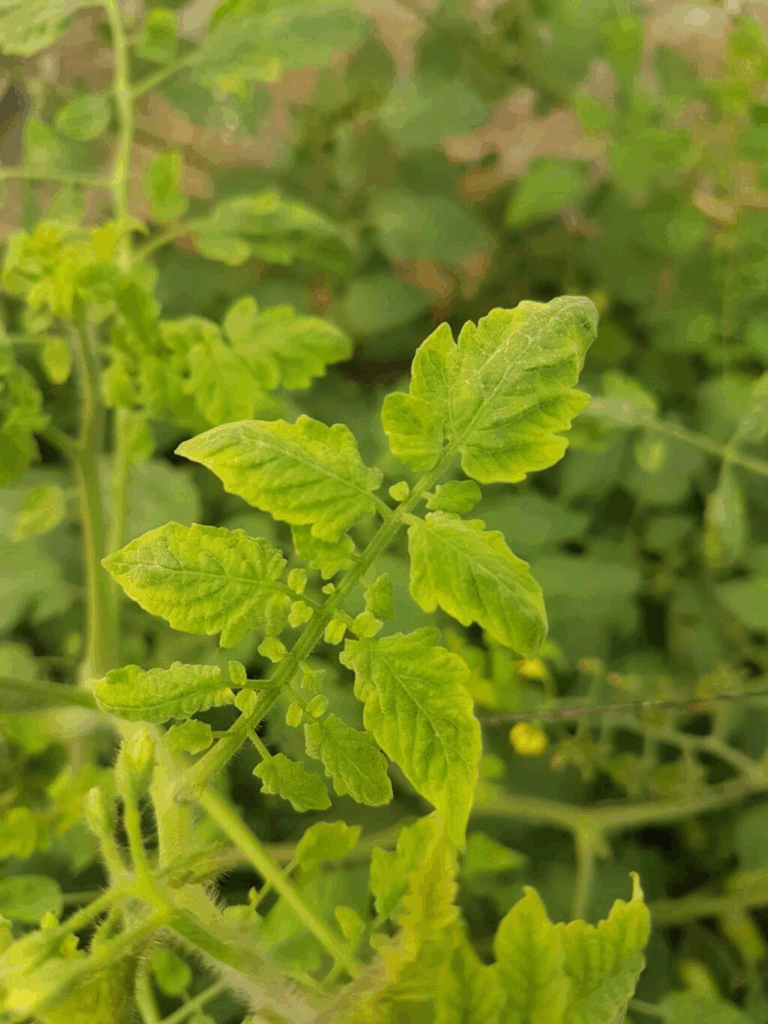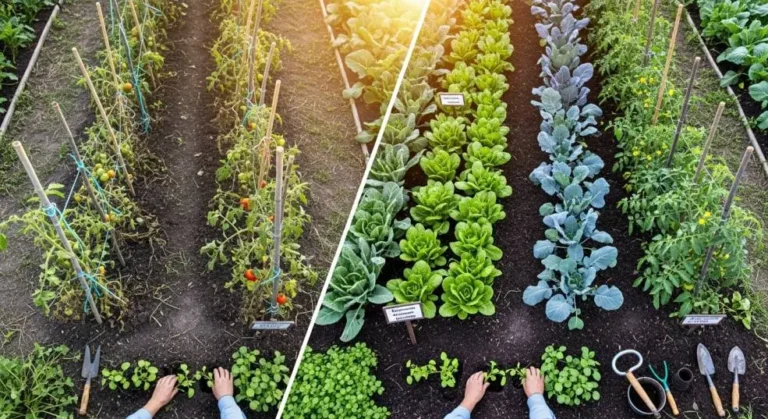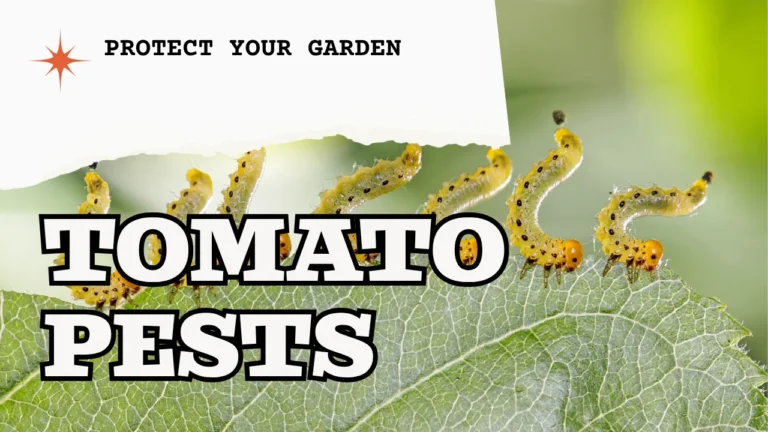Imagine this: you’ve cared for your tomato plants from small seedlings, watered them regularly, and dreamed of enjoying fresh tomatoes in your summer salads.
Then one morning, you see something strange — the leaves are curling up like tiny green scrolls. Your heart drops. What’s wrong with your beloved plants?
Don’t worry! Tomato leaf curl is common, and it’s usually fixable. I’ve studied tomato growing for years, so let me guide you through what’s going on and how to solve it.

Understanding the Curl: What’s Really Going On?
First, let’s understand the problem. Leaf curl is like your tomato plant saying, “I need help!” Just as you might hug yourself when you’re cold, tomato plants curl their leaves when they’re stressed. But remember, not all leaf curl is the same.
There are three main reasons for those twisted leaves: environmental stress (the most frequent cause), viral infections, and exposure to herbicides. Each requires a different solution, so figuring out the cause is key.
While leaf curl is a common issue for tomato growers, it’s just one part of the whole story. For a complete overview of all tomato leaf problems — from yellowing to spots to wilting — check out our guide on fixing tomato leaf issues before it’s too late.
The Most Common Cure: Managing Environmental Stress
In about 80% of cases, curled leaves on your tomato plant are a reaction to hot weather and uneven watering. This is called physiological leaf roll, a common condition in tomatoes and other vegetables. It’s just your plant’s way of coping.
The good news? This leaf curl usually doesn’t hurt your tomato yield. Your plant may look a bit stressed, but it can still produce tasty tomatoes.
Here are some easy solutions::
Water Consistently: Instead of watering a little each day, give your plants a deep drink once or twice a week. Water the soil about 6–8 inches deep. This helps your plant develop strong roots and stay hydrated during heat waves.
Mulch Heavily: Add a thick layer (3-4 inches) of organic mulch — like straw, shredded leaves, or dried grass clippings — around your plants. This keeps the soil cool, holds in moisture, and lowers stress on your plants.
Provide Afternoon Shade: When temperatures go above 90°F, use shade cloth that blocks 30-40% of sunlight during the hottest part of the day. This can cool the area by up to 10 degrees and help your plants avoid heat stress.

Balance Your Fertilizer: Over-fertilizing, especially with nitrogen-rich fertilizers, can trigger leaf curl. Stick to balanced fertilizers and follow package instructions carefully.
When Insects Are the Problem: The Whitefly Connection
Let’s dive into a serious issue: the Tomato Yellow Leaf Curl Virus (TYLCV). This harmful virus, spread by tiny whiteflies, can destroy your crops if you don’t act fast.
According to the NC State Extension’s comprehensive guide, early identification is critical because infected plants cannot be cured.
How to Identify Viral Leaf Curl: Viral leaf curl hits new growth first, unlike other types that start lower down.
You’ll see leaves turning pale yellow, getting thick and leathery, and the plant may look stunted. If you shake the plant, watch for tiny white insects flying around.
The hard truth: Once a plant is infected with a virus, there’s no cure. You must remove and destroy the infected plant immediately, not compost. The virus can survive in your compost pile and spread to next year’s garden.
Prevention is your best defense:
Check for Whiteflies Weekly: Look under leaves twice a week for these pests. Catching them early makes a big difference.
Use Neem Oil Wisely: Mix 2 tablespoons of pure neem oil with 1 teaspoon of insecticidal soap in a gallon of water. Spray the undersides of the leaves thoroughly every 7-10 days if you spot whiteflies. This helps break their life cycle.
Choose Resistant Varieties: If viral leaf curl is common in your area, plant varieties that resist it, like ‘Shanty,’ ‘Security,’ ‘Tygress,’ or ‘Mountain Magic.’ These plants have special genes that protect them.
Create Physical Barriers: Use floating row covers or plant marigolds and other flowers that attract helpful insects like ladybugs and parasitic wasps. They will help keep whitefly numbers down.
The Herbicide Headache
Here’s something many gardeners don’t realize: herbicides from neighboring lawns can drift into your garden and cause leaf curl.
If your plant’s leaves are cupping downward (rather than rolling upward) and you notice twisted, distorted growth starting at the top of the plant, herbicide exposure might be the culprit.
The cure: Unfortunately, there isn’t one. If herbicide damage is severe, you may need to remove the affected plants.
For future prevention, create physical barriers, use floating row covers during spring and early summer when neighbors are applying lawn treatments, and be extremely careful about the source of any compost or manure you bring into your garden.
Immediate Action Plan for Curling Leaves
If you’re reading this article because your tomato leaves are already curling, here’s your immediate action plan:
1. Check the Leaves: Are they rolling upward from the bottom? This likely means they need more water and mulch.
Savvy Gardening provides additional insights on proper mulching techniques that can make all the difference in preventing stress-related leaf curl.
2. Look for Pests: Check the undersides of the leaves for pests like whiteflies. If you find them, start neem oil treatments right away.
3. Look for Patterns: If the curling is patchy and along with yellowing and slow growth, it might be a virus. Remove those plants quickly.
4. Review Your Care: Have you pruned a lot or added fertilizer recently? These things can cause temporary curling that usually goes away on its own.
The Bottom Line
The best way to deal with tomato leaf curl is to prevent it. Water your plants regularly, use mulch, watch for pests, and pick varieties that suit your climate. If you see curling, don’t panic.
Leaf curl often happens when plants are stressed by summer heat. With a few care changes, your tomatoes can recover well.
Even expert gardeners face leaf curl — it happens to everyone. It’s just part of the fun of growing these tasty but sensitive plants.
Stay calm, watch your plants closely, and adjust your care as needed. Your tomatoes will reward you with a great harvest, even with curled leaves.




Leave a Comment